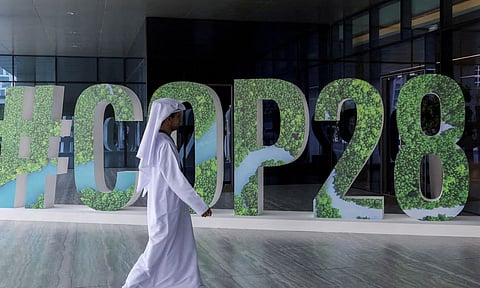

CHENNAI: On the sidelines of the UN climate conference (COP28) held in Dubai, the World Meteorological Organisation (WMO) confirmed that 2023 is set to be the warmest year on record. The agency warned that next year may be worse as El Nino of this year is likely to aggravate the heat in 2024. Breaking prior records, global mean temperature till October hovered around 1.4°C above the pre-industrial level (1850-1900 average). Although this shows that 2023 almost hit the warming limit threshold of 1.5°C, this is no guarantee that the world will permanently breach this 1.5°C bar set by the Paris agreement, which refers to long term warming over several years.
UN Secretary General Antonio Guterres underscored the need to set clear expectations for the next round of climate action plans and committing to partnerships and finance to make them possible. The MO involves committing to triple renewables and double energy efficiency and phasing out fossil fuels with a clear time frame aligned to the 1.5°C limit. This might be easier said than done.
Last week, 118 nations signed a pledge to triple their renewable energy capacity by 2030. India is among those countries whose names are not on that list. The idea to beef up renewable energy capacity and transform it into a declaration at COP28 was first put forth by European Commission President Ursula von der Leyen in April this year. But it was highlighted as a concrete proposal for the first time at the G-20 declaration in September.
The Global Renewables and Energy Efficiency Pledge has pledged to triple worldwide installed renewable energy generation capacity to at least 11,000 gigawatts (GW) as well as double the global average annual rate of energy efficiency improvements to over 4% by 2030. India as part of its nationally determined contributions (NDCs) has already committed to installing 500 GW of electricity from non-fossil fuel sources by 2030. As of March 2023, the nation had already close to 170 GW of installed capacity. Tripling this would mean overshooting the 500 GW commitment.
The pledge that these nations have currently committed to, has not yet been included in the main negotiating texts that are being deliberated upon before a final COP28 agreement is belted out by December 12. It is quite evident that the prior decades of the UN Framework Convention on Climate Change (UNFCCC) negotiations haven’t really managed to secure equitable and effective climate action. Many stakeholders are of the opinion that this year’s meeting in the UAE could offer an opportunity to transition from hollow promises to actual, on ground intervention. This time around, the summit must train its focus on the needs of energy-deficient nations in the global south.
Most first world economies, with the exception of two, are majorly deviating from meeting their NDCs. The bulk of the blame of the climate crisis needs to be placed at the doors of these developed nations, that persistently evade their responsibilities. Emerging economies need nothing short of $2 trillion annually to meet their emission targets and mitigate the impact of climate change. Sadly, developing nations are still crying hoarse about the $100 bn annual target that was earmarked for financing from the developed world. Streamlining climate finance, institutionalising climate action, diversifying and distributing green tech value chains across geographies should be the way forward.